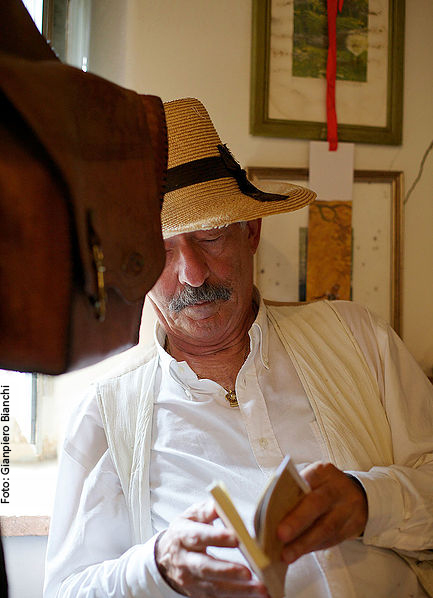Antonio Saliola Home Page
Painting with words writing with colours
Antonio Saliola was born in 1939 in Bologna, the town where he lived and worked until his passing in March 2024.
During the war he spent his childhood displaced in the countryside and that “world” would forever remain in his heart, as well as his beloved parents: mamma Natalia, a creative teacher from Modena and babbo Donato, of strong Molise origins.
After graduating from the School of Law he had been an Official of the Academy of Fine Arts in Bologna from 1967 to 1974, years during which he opened and directed Galleria Tempo.
He then made the decision ti leave the rest aside to finally dedicate himself to painting, his vocation.
He loved paintings, books, and cinema which together helped him write the script of his existence.
In 1972 he began opening a long series of personal exibitions that unraveled a variety of themes: family groups, yards, gardens, interiors.
Critics, scholars, writers and directors soon became interested in his work and quickly got involved with him in projects that arose from mutual friendship.
In 1998 he packed his paintings-stories to take them around the world exhibiting in Paris, Brussels, London, New York, Chicago, Buenos Aires, Hong Kong, Montecarlo.
But he always continued to live in his hometown spending the summers in Romagna, in an house called Cagnotta and then, later on, from 1992, in Montefeltro in a medieval village called Petrella Guidi where he created his very own soul-healing place: not satisfied with just painting gardens, he created an actual vegetable-garden called “Quasi Orto” using flowers, plants, ladders, and walls, instead of brushes and paints, to accompany the visitor on a stroll through eight rooms. Designed as a special pictorial work that continually changes and never ends: every artist’s dream.
The idyll of the gardens still and always echoed, without however taking away, over time, from paintings of dreamy interiors and old mysterious libraries. Adding to these, in more recent years, also paintings that were a fascinating reworking of the world of fairy tales, without prejudice to the suspicion that the real painting had actually always been his own life.